That's Entertainment! III

Brief Synopsis
Cast & Crew
Bud Friedgen
Carmen Miranda
Ray Bolger
Cyd Charisse
Jimmy Durante
Judy Garland
Film Details
Technical Specs
Synopsis
Sequel to "That's Entertainment!" (USA/1974) and "That's Entertainment! Part 2" (USA/1976). This third installment in the series features previously unseen behind-the-scenes footage, musical outtakes and three-strip color negative restorations.
Cast

Carmen Miranda

Ray Bolger
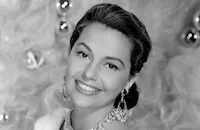
Cyd Charisse

Jimmy Durante

Judy Garland

Betty Jaynes

Jack Buchanan

Ricardo Montalban

Marjorie Main
Frances Williams

Kathryn Grayson

Tony Martin

Joan Crawford
Granville Van Dusen
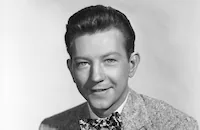
Donald O'connor

Ann Miller

Buddy Ebsen

Louis Jourdan

Ray Mcdonald
The Dodge Twins

Gene Kelly

Lena Horne
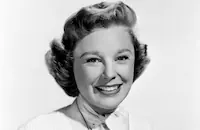
June Allyson
Kenny Baker

Gloria Dehaven

George Murphy

Ava Gardner
Harry James
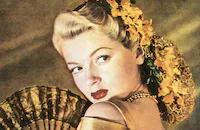
Lana Turner

Debbie Reynolds

Marion Davies

Doris Day

Ginger Rogers
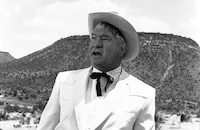
The Avalon Boys

Mickey Rooney

Esther Williams
John Mauceri
George K. Arthur

Polly Moran

Elvis Presley

Hedy Lamarr

Vera-ellen

Nanette Fabray

Marie Dressler

Lucille Ball
Joan Mccracken

Buster Keaton

Bessie Love
Dolores Grey

Nancy Walker
Douglas Macphail

Eleanor Powell

Fred Astaire

Betty Hutton

Howard Keel

Jack Benny

Johnny Mercer

Leslie Caron
Crew
Mark Abbott
Milton Ager
Fred E. Ahlert
Louis Alter
Howard Anderson
Kathy Andreasen
Harold Arlen
Jeff Atmajian
Lydia Avalos
Bill Bell
Julius Benson
Irving Berlin
Harry Blake
Ralph Blane
Ralph Blane
Larry Blank
Marilee Bradford
Jack Brooks
Bob Brown
Nacio Herb Brown
Walter Bullock
James Burris
Reid W Caulfield
Saul Chaplin
Richard L Cohen
Betty Comden
Scott Crabbe
Gary Crandall
James G Crawford
Sondra Davis
Gene De Paul
Howard Dietz
James Echerd
Roger Edens
Jack Edgerton
Peter Fitzgerald
Bradley Flanagan
Jim France
Arthur Freed
Ralph Freed
Bud Friedgen
Bud Friedgen
Bud Friedgen
David G George
George Gershwin
Ira Gershwin
Ray Gilbert
Barry Goldberg
Al Goodhart
Mack Gordon
Adolph Green
Michael L Griffin
Sydney Guilaroff
Scott Hamilton
Oscar Hammerstein Ii
William Harbach
E. Y. Harburg
Lorenz Hart
Al Hoffman
Marlene Hubbard
Randy Johnson
Gus Kahn
David Kelson
Jerome Kern
Ron Lambert
Burton Lane
Richard B. Larimore
Jerry Leiber
Alan Jay Lerner
Marsha Lewis
Teresa Lewis
Frederick Loewe
Tom Long
Hummie Mann
Hummie Mann
Dee Mansano
Andy Martinez
John Mccormack
Charles Mcdonald
Jimmy Mchugh
Betty Kern Miller
Stanley E Miller
Sam Moore
Joel Moss
Kelly Muldoon
Josef Myrow
George Nakama
Andy Nelson
Mary Nelson-duerrstein
Vern Nobles
Jararaca Paiva
Vincent Paiva
Jack Palinkos
Scott Perry
Jeff Porrello
Cole Porter
Andre Previn
Robert Reiger
Bernard Joseph Reilly
Richard Rodgers
Ric Rondell
Ric Rondell
Arthur Schwartz
Marc Shaiman
Keith M Sheridan
Michael J Sheridan
Michael J Sheridan
Michael J Sheridan
Steve Sheridan
Daniel Silverberg
Chris Smith
Pasquale Spezzano
Mike Stoller
Robert G Sugarman
Don Tardino
Peter Ilyich Tchaikovsky
Bill Teague
Joseph T Terranova
Roy Turk
Nick Vidar
Harry Warren
Ken Watson
Jack Yellen
Teddy Yonenaka
James B Young
Philip Zimet
Videos
Trailer
Hosted Intro
Film Details
Technical Specs
Articles
That's Entertainment! III - That's Entertainment III!
Covering Hollywood musicals from their early, often humorous attempts to define the genre in an all-girl jailhouse number or a sexy girls' school shower sequence, That's Entertainment! III soon moves on to examples of the studio's golden age, including an unforgettable opening sequence with Lucille Ball decked out in a shocking pink costume with a whip taming a ferocious group of sequined lady panthers from Ziegfeld Follies (1946). Escapism proves a perennial fixation of these extravagant MGM song-and-dance spectaculars, including the vogue in the late forties and early fifties for the underwater musicals that starred MGM's million dollar mermaid Esther Williams. The swimmer/actress, one of numerous present-day star cameos in That's Entertainment! III, even shows off MGM's saucer tank where she performed her popular underwater routines in films like Dangerous When Wet (1953), swimming with cartoon stars Tom and Jerry.
One half of MGM's most successful musical team, Mickey Rooney, also makes an appearance in That's Entertainment! III to introduce the string of films in which he co-starred with his partner Judy Garland, making them one of Hollywood's most beloved musical couples; the film clips include Babes in Arms (1939), Babes on Broadway (1941) and Strike Up the Band (1940).
Actual appearances by MGM stars like June Allyson, Ann Miller, Cyd Charisse, Lena Horne and Gene Kelly highlight the studio's roster of talent, while a parade of glamour girls like Ava Gardner, Elizabeth Taylor, Lena Horne and Myrna Loy are testament to the studio's high standards of beauty. In addition to featuring the best in MGM star power, That's Entertainment! III also includes some notable misfires like the attempt to integrate the contortionist dancing act of the Ross Sisters into Broadway Rhythm (1944). The scenes that made film history, including a montage of musicals from legends like Gene Kelly, Judy Garland and Fred Astaire, are shown alongside scenes that wound up on the cutting room floor, like Lena Horne in a bubble bath from Cabin in the Sky (1943), a scene that was deemed too risque to keep in the completed film because it showed a black woman in the bathtub. Another lost scene features Judy Garland in Indian garb playing Annie Oakley from Annie Get Your Gun (1950), a performance that was later replaced with Betty Hutton in the same number when Garland suffered a nervous breakdown. Other deleted scenes you'll see include Cyd Charisse performing "Two Faced Woman" from 1953's The Band Wagon (you also get to see Joan Crawford in blackface lip-syncing to the same song in Torch Song, 1953), Debbie Reynolds performing a solo of "You Are My Lucky Star" from Singin' in the Rain (1952), and an alternate version of Fred Astaire performing "I Wanna Be a Dancin' Man" in The Belle of New York (1952).
Along with a tribute to Hollywood's high points is an acknowledgement of its darker strains, like racism and censorship and the tragedies that never interfered with the show biz motto of "the show must go on."
Though the musical is probably best remembered for its heyday in the thirties, forties and fifties, That's Entertainment! III also shows the efforts made by the genre to reach a new generation of filmgoers, as in a rollicking clip from the Elvis Presley musical Jailhouse Rock (1957), which bridged the gap between the glamour musical of Hollywood's golden age to the conquering beast that was rock 'n' roll.
Producer: George Feltenstein, Peter Fitzgerald, Bud Friedgen, Michael J. Sheridan
Director/Screenplay: Bud Friedgen, Michael J. Sheridan
Director of Photography: Howard A. Anderson III
Film Editing: Bud Friedgen, Michael J. Sheridan
Cast: June Allyson, Cyd Charisse, Mickey Rooney, Ann Miller, Lena Horne, Gene Kelly, Howard Keel, Debbie Reynolds, Esther Williams, Marie Dressler.
BW & C-121m. Closed captioning.
by Felicia Feaster

That's Entertainment! III - That's Entertainment III!
That's Entertainment: The Ultimate Anthology of M-G-M Musicals - THAT'S ENTERTAINMENT! THE ULTIMATE ANTHOLOGY OF M-G-M MUSICALS - New, expanded edition
THAT'S ENTERTAINMENT! THE ULTIMATE ANTHOLOGY OF M-G-M MUSICALS expands the original landmark release with an entire disc of never before released music, and uses new technology to upgrade the sound quality of 30 percent of the original box set. The newly expanded and upgraded version of THAT'S ENTERTAINMENT! is available April 25 at regular retail outlets. To order the That's Entertainment anthology, go to TCM Shopping.
The six-CD collection contains 135 tracks – nearly 8 hours of music – gathered from M-G-M movies released between 1929 and 1957 including unforgettable performances from more than 75 classic musicals including The Wizard Of Oz, Meet Me In St. Louis, Singin' In The Rain, Easter Parade, Kiss Me Kate, Brigadoon, An American In Paris and more.
The performances feature some of the biggest names among Hollywood royalty: a trio of Bing Crosby duets from 1956's High Society featuring Frank Sinatra for "Well Did You Evah?," Louis Armstrong for "Now You Has Jazz," and Grace Kelly for "True Love"; Doris Day sings "Ten Cents A Dance" and "Shakin' The Blues Away"; Elvis Presley leads the prison band through "Jailhouse Rock" and Fred Astaire and Janice Paige perform "Stereophonic Sound" from Silk Stockings.
The collection's sixth disc contains 25 performances that have never been released including demos, outtakes and complete version of songs edited for film. Highlights include: two songs from the uncompleted film, The March of Time, including Bing Crosby singing "Poor Little G-String"; Jimmy Durante and Polly Moran spoofing Rodgers and Hart's "Shuffle Off To Buffalo" with a song called "Fly Away To I-Oway"; "You Belong To My Heart" featuring Yvonne DeCarlo, who later earned fame as television's Lily Munster; a pair of songs performed by Joan Crawford "Follow Me" and "Something's Gotta Happen Soon"; Lena Horne singing "You Won't Forget Me," a song lip-synced by Crawford in Duchess of Idaho; the complete version of "My Man" performed by Fanny Brice - the inspiration for the movie Funny Girl; and "Baby Doll" performed by Gene Kelly for Take Me Out To The Ballgame, a song cut from the movie but sung later by Fred Astaire in Belle Of New York.
That's Entertainment: The Ultimate Anthology of M-G-M Musicals - THAT'S ENTERTAINMENT! THE ULTIMATE ANTHOLOGY OF M-G-M MUSICALS - New, expanded edition
TCM Remembers Howard Keel this Monday, Nov. 15th
PLEASE NOTE SCHEDULE CHANGE
6:00 AM
Callaway Went Thataway (1951)
7:30 AM
Ride, Vaquero! (1953)
9:30 AM
War Wagon (1967)
11:30 AM
"MGM Parade Show #14"
(Keel talks with George Murphy about his latest MGM picture "Kismet")(1955)
12:00 PM
Showboat (1951)
2:00 PM
Kiss Me Kate (1953)
4:00 PM
Seven Brides for Seven Brothers (1954)
6:00 PM
Kismet (1955)
HOWARD KEEL (1919-2004):
Howard Keel, the strapping singer and actor whose glorious baritone took him to stardom in the early '50s in some of MGM's best musicals, including Showboat, Kiss Me Kate and Seven Brides for Seven Brothers, died on November 7 of colon cancer at his home in Palm Desert, California. He was 85.
He was born Harry Clifford Leek on April 13, 1919, in Gillespie, Illinois. His father, was a coal miner and his mother, a strict Methodist, forbid the children from enjoying popular entertainments. When his dad died, his mother relocated the family to California when Harry was still a young teenager.
After he graduated high school, Keel had a brief stint as a singing busboy, but had not considered a professional career as a vocalist....until one fateful evening in 1939. It was at this time he saw celebrated opera singer, Lawrence Tibbett, at the Hollywood Bowl. Keel was inspired, and he soon began taking voice lessons. Over the next several years, he carefully trained his voice while entering any singing contest he could find. It wasn't long before his talents caught the attention of Rodgers & Hammerstein.
In 1946, they signed him to replace John Raitt in the Broadway production of Carousel, changed his name to Howard Keel (His proper surname Leek spelled backwards), and Keel was on his way to international stardom.
After his run in Carousel ended, he sailed to London the following year to play the role of Curley in Rodgers & Hammerstein's Oklahoma. He received rave reviews from the London press, and by the time he returned to the United States in 1948, he was ready to make his move into films.
Keel made his movie debut in the British thriller, The Small Voice (1948), but it would be his second film, and first for MGM, portraying Frank Butler, Betty Hutton's leading man in Annie Get Your Gun (1950), that sealed his success. Keel's several strengths as a performer: his supple, commanding singing voice; his athletic, 6'4" frame; striking, "matinee-idol" good looks; and his good humored personality made him one of the studios' top leading men over the next few years. Indeed, between 1951-55, Keel could do not wrong with the material he was given: Show Boat (1951), Lovely to Look at (1952), Kiss Me Kate (1953), Seven Brides for Seven Brothers (1954), and Kismet (1955). Clearly, he was a shining star in this golden era of the MGM musical.
By the late '50s, movie musicals began to fade out of fashion, but Keel returned to the stage and had success performing with several touring companies. He made a brief return to films when he was cast as a seaman battling carnivorous plants from outer space in the popular British sci-fi hit, The Day of the Triffids (1962). Television also provided some work, where he guest starred in some of the more popular shows in the late '60s including Run For Your Life, and The Lucy Show.
Keel would keep a low profile over the next decade, but he made an amazing comeback in 1981, when he was cast as Clayton Farlow, Ellie Ewing's (Barbara Bel Geddes) second husband in the wildly successful prime time soap, Dallas. Not only did he play the role for ten seasons, but Keel would also be in demand for many other shows throughout the '80s and '90s: The Love Boat, Fantasy Island, Murder, She Wrote, Hart to Hart, and Walker, Texas Ranger, to name a but a few. By the late-'90s, Keel retired to his home in Palm Desert, California, where still made public appearances now and again for a tribute or benefit. He is survived by his wife of 34 years, Judy; a son, Gunnar; daughters, Kaija, Kristina and Leslie; 10 grandchildren, and one great-granddaughter.
by Michael T. Toole
Important Milestones on Howard Keel:
1933:
Moved to Southern California at age 16 (date approximate)
Worked as a singing busboy in a Los Angeles cafe
Worked for Douglas Aircraft as a manufacturing representative travelling among various company plants; work included singing; won a first prize award at the Mississippi Valley while on the road; also won an award at the Chicago Music Festival
Began singing career with the American Music Theatre in Pasadena, California
Chosen by Oscar Hammerstein II to perform on Broadway in "Carousel"; succeeded John Raitt in the leading role of Billy Bigelow; also took over the leading role of Curly in "Oklahoma"
1947:
Recreated the role of Curly when he opened the London stage production of "Oklahoma"
1948:
Made feature film debut in a non-singing supporting role in the British crime drama, "The Small Voice"
1950:
Signed by MGM; became instant star as the male lead of "Annie Get Your Gun"
1951:
Provided the offscreen narration for the Western saga, "Across the Wide Missouri", starring Clark Gable
1951:
First film opposite Kathryn Grayson, "Show Boat"
1952:
First leading role in a non-musical, "Desperate Search"
1954:
Made best-remembered film, "Seven Brides for Seven Brothers"
1955:
Last musical starring roles, and last musicals for MGM, "Jupiter's Darling" and "Kismet"
1958:
Went to Britain to play the leading role in the action drama, "Floods of Fear"
1967:
Last leading role, "Red Tomahawk"
1968:
Last feature film appearance for over 20 years, "Arizona Bushwhackers"
Starred on the London stage in the musical "Ambassador"; later brought the role to Broadway (date approximate)
Toured the nightclub circuit, sometimes teaming up with his co-star from three MGM musicals of the 1950s, Kathryn Grayson
Toured in stage productions of musicals and comedies including "Camelot", "Man of La Mancha", "Paint Your Wagon", "I Do! I Do!", "Plaza Suite", "Gigi", "Show Boat", "Kismet", "The Most Happy Fella" and "The Fantasticks"
1977:
Teamed with Jane Powell on record-breaking national theater tour of "South Pacific"
1978:
Reprised screen role of eldest brother Adam in a touring stage version of "Seven Brides for Seven Brothers", opposite original screen co-star Jane Powell
Joined the cast of the CBS primetime serial drama, "Dallas", which had premiered in 1978; played Clayton Farlow
1983:
Recorded first solo album, "And I Love You So"
1994:
Was one of the hosts of the feature compilation documentary, "That's Entertainment III", revisiting the MGM musical from the coming of sound through the late 1950s
Keel was President of the Screen Actors Guild from 1958-1959.
TCM Remembers Howard Keel this Monday, Nov. 15th PLEASE NOTE SCHEDULE CHANGE
Donald O'Connor, 1925-2003
Born Donald David Dixon O' Connor in Chicago on August 28, 1925, he was raised in an atmosphere of show business. His parents were circus trapeze artists and later vaudeville entertainers, and as soon as young Donald was old enough to walk, he was performing in a variety of dance and stunt routines all across the country. Discovered by a film scout at age 11, he made his film debut with two of his brothers in Melody for Two (1937), and was singled out for a contract by Paramount Pictures. He co-starred with Bing Crosby and Fred MacMurray in Sing, You Sinners (1938) and played juvenile roles in several films, including Huckleberry Finn in Tom Sawyer - Detective (1938) and the title character as a child in Beau Geste (1939).
As O'Connor grew into adolescence, he fared pretty well as a youthful hoofer, dancing up a storm in a string of low-budget, but engaging musicals for Universal Studios (often teamed with the equally vigorous Peggy Ryan) during World War II. Titles like What's Cookin', Get Hep to Love (both 1942), Chip Off the Old Block and Strictly in the Groove (both 1943) made for some fairly innocuous entertainment, but they went a long way in displaying O'Connor's athletic dancing and boyish charm. As an adult, O'Connor struck paydirt again when he starred opposite a talking mule (with a voice supplied by Chill Wills) in the enormously popular Francis (1949). The story about an Army private who discovers that only he can communicate with a talking army mule, proved to be a very profitable hit with kids, and Universal went on to star him in several sequels.
Yet if O'Connor had to stake his claim to cinematic greatness, it would unquestionably be his daringly acrobatic, brazenly funny turn as Cosmo Brown, Gene Kelly's sidekick in the brilliant Singin' in the Rain (1952). Although his self-choreographed routine of "Make "Em Laugh" (which includes a mind-bending series of backflips off the walls) is often singled out as the highlight, in truth, his whole performance is one of the highlights of the film. His deft comic delivery of one-liners, crazy facial expressions (just watch him lampoon the diction teacher in the glorious "Moses Supposes" bit) and exhilarating dance moves (the opening "Fit As a Fiddle" number with Kelly to name just one) throughout the film are just sheer film treats in any critic's book.
After the success of Singin' in the Rain, O'Connor proved that he had enough charisma to command his first starring vehicle, opposite Debbie Reynolds, in the cute musical I Love Melvin (1953). He also found good parts in Call Me Madam (1953), There's No Business Like Show Business (1954), and Anything Goes (1956). Unfortunately, his one attempt at a strong dramatic role, the lead in the weak biopic The Buster Keaton Story (1957) proved to be misstep, and he was panned by the critics.
By the '60s, the popularity of musicals had faded, and O'Connor spent the next several years supporting himself with many dinner theater and nightclub appearances; but just when it looked like we wouldn't see O'Connor's talent shine again on the small or big screen, he found himself in demand at the dawn of the '90s in a string of TV appearances: Murder She Wrote, Tales From the Crypt, Fraser, The Nanny; and movies: Robin Williams' toy-manufacturer father in Toys (1992), a fellow passenger in the Lemmon-Matthau comedy, Out to Sea (1997), that were as welcoming as they were heartening. Survivors include his wife, Gloria; four children, Alicia, Donna, Fred and Kevin; and four grandchildren.
by Michael T. Toole
Donald O'Connor, 1925-2003
Quotes
Trivia
Miscellaneous Notes
Released in United States April 28, 1994
Released in United States June 3, 1994
Released in United States May 13, 1994
Released in United States on Video October 12, 2004
Released in United States September 1994
Released in United States Spring May 6, 1994
Shown at Toronto International Film Festival (Gala Screening) September 8-17, 1994.
Began shooting March 13, 1993.
Completed shooting June 15, 1993.
Includes the following musical outtakes from previous films: "Mr. Monotony" from "Easter Parade" (USA/1948), performed by Judy Garland; "March of the Doagies" from "The Harvey Girls" (USA/1946), performed by Judy Garland, Ray Bolger, Cyd Charisse, Kenny Baker, Marjorie Main and Chill Wills; "I'm an Indian Too" from "Annie Get Your Gun" (USA/1949), performed by Judy Garland; "Ain't It the Truth" from "Cabin in the Sky" (USA/1943), performed by Lena Horne; "Two Faced Woman" from "The Band Wagon" (USA/1953), performed by Cyd Charisse (dubbed by India Adams); and "You Are My Lucky Star" from "Singin' In the Rain" (USA/1952), performed by Debbie Reynolds.
Released in United States April 28, 1994 (Premiered at National Theater in Westwood, CA April 28, 1994.)
Released in United States Spring May 6, 1994
Released in United States May 13, 1994 (San Francisco)
Released in United States June 3, 1994 (Seattle)
Released in United States September 1994 (Shown at Toronto International Film Festival (Gala Screening) September 8-17, 1994.)
Released in United States on Video October 12, 2004
















